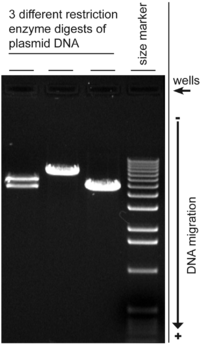
Photo from wikipedia
Introduction. With the current increases in occupational skin diseases, literature data attesting the decreasing efficiency of barrier creams with respect to the manufacturer’s declarations and legal regulations granting skin protection… Click to show full abstract
Introduction. With the current increases in occupational skin diseases, literature data attesting the decreasing efficiency of barrier creams with respect to the manufacturer’s declarations and legal regulations granting skin protection gels for employees, research is required to analyse and evaluate the recipes used for hydrophilic skin protection gels based on polyacrylates. Methods. This study investigated the rheological properties, pH and sensory perception of hydrophilic barrier gels based on polyacrylates. Results. The acrylic acid derivatives used were good thickeners, and helped to form transparent gels of adequate durability. They could be used to create hydrophilic films on the surface of the skin to protect it against hydrophobic substances. A correlation was shown between the results of the rheological properties and the barrier properties of the gels. This confirms the possibility of monitoring the quality of the gels at the stage of recipe development. Conclusions. Polyacrylates are viable for use in industry to produce hydrophilic barrier creams suitable for skin protection.
Journal Title: International Journal of Occupational Safety and Ergonomics
Year Published: 2018
Link to full text (if available)
Share on Social Media: Sign Up to like & get
recommendations!